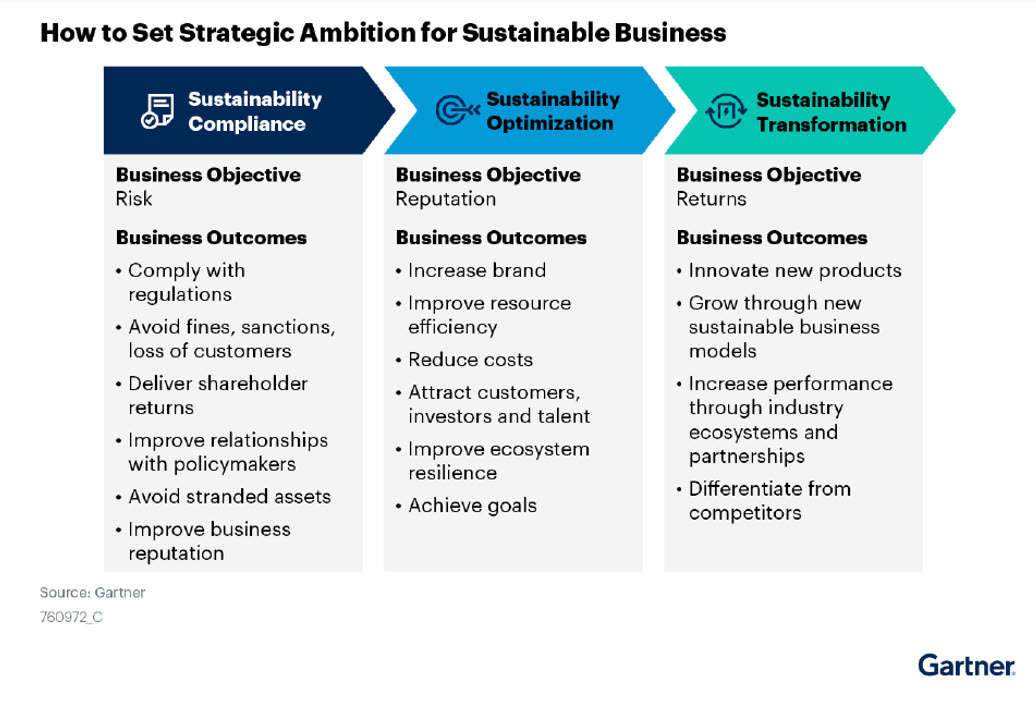Gartner Report: How to Set Strategic Ambition for Sustainability
Executive Summary
Articulating a clear strategic ambition allows organizations to effectively engage with and advance their sustainability efforts. Executive leaders should leverage business outcomes such as risk management, reputation enhancement, and returns generation to determine the appropriate level of strategic ambition. Gartner states “true transformation includes new sustainability business models that drive 30% or more revenue within a 10-year period.”

In this report from Gartner titled, “How to Set Strategic Ambition for Sustainability,” analysts Kristin Moyer and Sarah Watt share actionable insights to help organizations strategically position themselves in the sustainability landscape, aligning with broader business goals while remaining adaptable to changing market and regulatory conditions.
The report categorizes strategic ambition into three approaches: compliance, optimization, and transformation – and underscores that no single approach is universally superior; each one supports different facets of business success.
- Compliance as a Foundation: Achieving compliance with sustainability regulations is challenging and demands substantial transformation and investment. Compliance helps align risk with enterprise risk appetite and provides a foundation for further sustainability efforts.
- Optimization for Reputation: Enhancing resource efficiency to optimize material, energy, and water use can boost brand reputation and stakeholder perception. This approach also offers potential cost savings, exemplified by initiatives like refurbishing devices to reduce both expenses and emissions.
- Transformation for Returns: Embracing sustainability transformation can lead to growth through innovative business models and decarbonization. Industries, such as automotive, illustrate how transformation can be a strategic choice or necessity, offering preferential pricing and improved access to capital.
 The report also identifies several triggers that can signal the need for a strategic shift, such as increased stakeholder pressure and changes in access to capital based on an enterprise's environmental, social, and governance (ESG) performance. The importance of being proactive with sustainability risks and opportunities is emphasized, including actions such as enhancing circular economy practices and integrating sustainability into procurement decisions.
The report also identifies several triggers that can signal the need for a strategic shift, such as increased stakeholder pressure and changes in access to capital based on an enterprise's environmental, social, and governance (ESG) performance. The importance of being proactive with sustainability risks and opportunities is emphasized, including actions such as enhancing circular economy practices and integrating sustainability into procurement decisions.